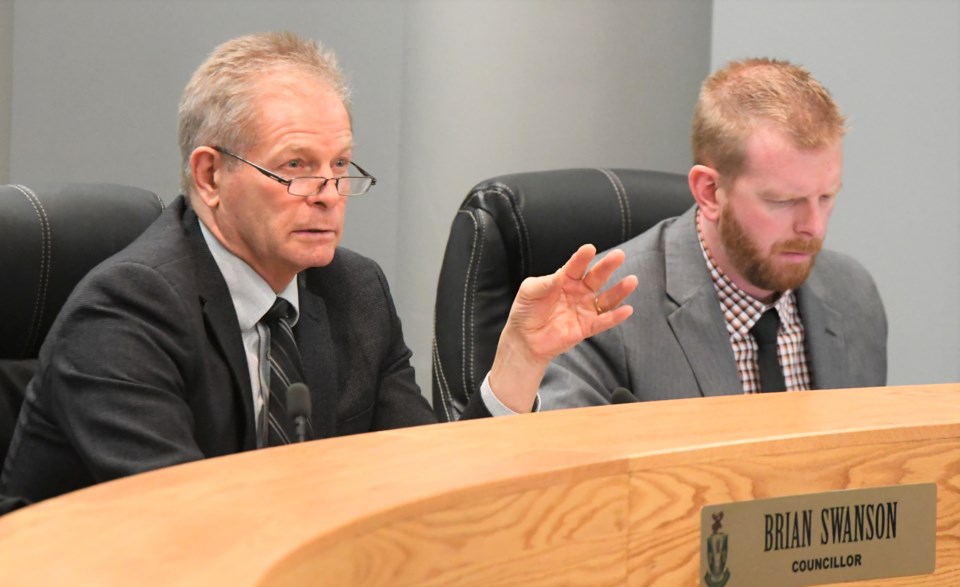It would take eight extra months to clear a backlog of water infrastructure projects without additional city crews, so the Department of Engineering believes adding a second in-house construction crew will clear that waitlist.
The water and wastewater utility has insufficient manpower to address infrastructure repairs, while the backlog of uncompleted repairs is increasing, according to a departmental report. Current estimates suggest it could take another five years before sufficient capital investment and preventative maintenance are made that would result in reduced infrastructure failures and repairs.
There are currently 137 projects that are backlogged.
The department believes hiring six new permanent employees, plus turning six temporary staff into permanent staff, would achieve the necessary repairs. These 12 employees would be divided into two-full time functioning repair/construction crews and two full-time Vactor trucks teams.
“Completion of these programs is essential to reducing long-term operating costs, while simultaneously providing the benefit of increasing the lifespan of the infrastructure, resulting in decreased capital investment,” the report added.
The estimated annual cost to make the six temporary staff permanent and hire six new permanent employees is $597,000. The six new employees would become a second in-house construction crew.
During its Oct. 15 regular meeting, city council voted 4-3 in favour to make the six temporary staff permanent and to hire six new permanent employees, with an extra $40,000 added to the 2019 waterworks budget, and to spend $500,000 from the equipment control account to purchase a Vactor truck.
Mayor Fraser Tolmie and councillors Chris Warren, Crystal Froese and Heather Eby voted in favour, while councillors Brian Swanson, Dawn Luhning and Scott McMann were opposed.
Council discussion
There are two solutions to address the problems facing the water distribution system, said Swanson. One is to hire more people and buy a Vactor truck as per the proposal. The other option — that he favours — is to hire more independent contractors.
Council was made aware of the backlog two months ago, he added. The new municipal crew will start in January, but five contractors can attack the backlog immediately.
The municipality can save money by adding an in-house construction team, argued Warren. The data shows work crews have completed more projects during the last five years. That experience means excavation costs have also decreased.
The municipality will not get ahead of the backlog until changes are made, said Eby. Things have to be done differently to get results, especially for some homeowners living without water. She hoped to see a big decrease in the backlog in a year’s time.
Background
Hiring a second in-house engineering team would save $500,000, which was being paid to engineering consulting firms to design the cast-iron program, and would save $100,000 in other contracted costs, explained city manager Jim Puffalt.
The new engineering team could complete the cast-iron program for $395,000. This second crew would also address the backlog of water and sewer system repairs and then transition to water main replacement construction.
An in-house design team was created earlier this year and is working to design the 2020 cast iron replacement program.
Operational repair crews have made major strides in performance, leading to a 70-per-cent increase in repairs over a five-year span, said Puffalt. Similarly, operational repair costs per excavation have decreased by 48 per cent during the same time.
About 200 excavations were completed in 2014, while 330 excavations were completed last year. Meanwhile, the average cost per excavation in 2014 was around $22,000 but decreased to about $14,000 last year.
However, there was a year-end backlog at the end of 2014 of about 90 excavations. That backlog declined to about 30 projects the next year and then increased to about 90 again in 2018.
“This backlog negatively affects customers and increases risks due to failed components in our distribution and collection systems, most (notably) in the area of fire protection,” Puffalt said.
Contractors have been used over the years in repair activities. In 2014 about 10 excavation projects were contracted out, while in 2018 that number was 20.
It cost the municipality $773,941 during the last three years to contract out additional hydro-vac units for projects.
The next regular council meeting is Monday, Oct. 28.




